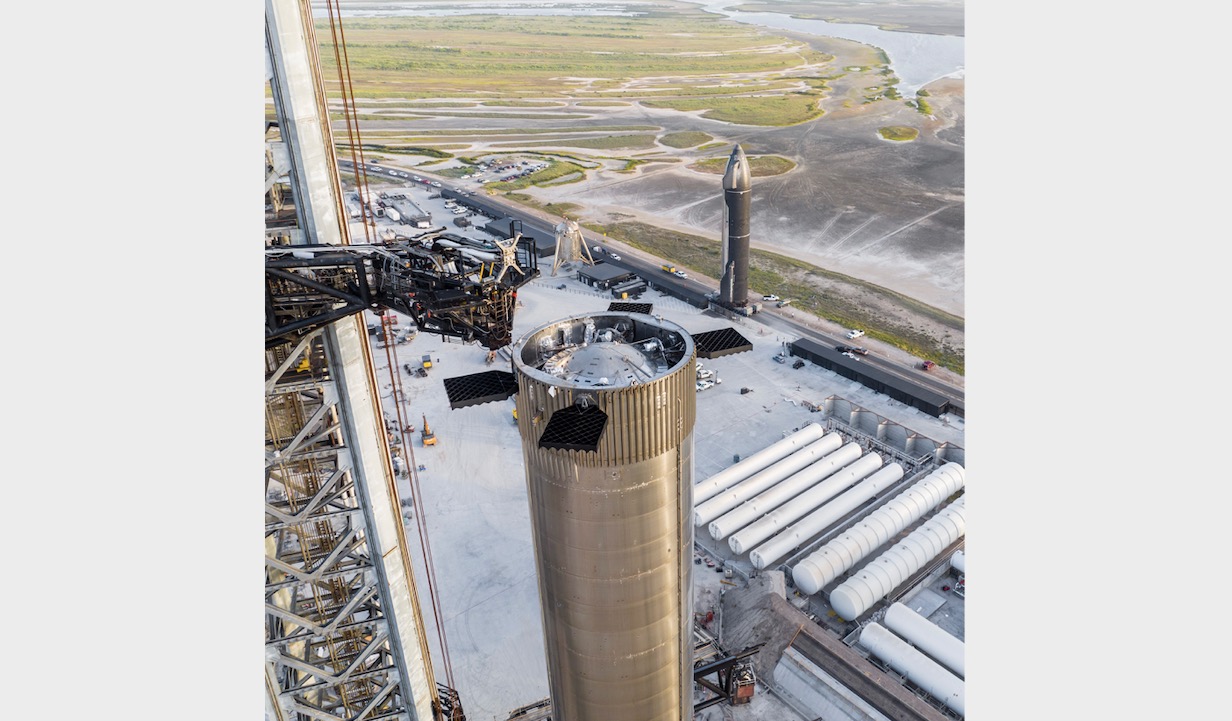Fireball briefly engulfs base of SpaceX's huge Starship booster during test

SpaceX just lit a very big candle — by accident, it would seem.
A fireball erupted at the base of Booster 7 — a prototype of Super Heavy, the huge first stage for SpaceX's next-gen Starship deep-space transportation system — during a test Monday (July 11) at the company's Starbase facility in South Texas.
The blaze was unintentional, SpaceX founder and CEO Elon Musk said via Twitter on Monday evening.
"Yeah, actually not good. Team is assessing damage," Musk tweeted. The fireball resulted when an "engine spin start test" did not go according to plan, he explained in another Twitter post.
Photos: SpaceX lifts huge Super Heavy rocket onto launch stand
Holy moly. Well, that was unexpected!https://t.co/dUUqw7ojRv pic.twitter.com/7IGztPuE12July 11, 2022
SpaceX is prepping Booster 7 for the first-ever Starship orbital test flight. That landmark mission could lift off in the next few months, if all goes according to plan (and if Booster 7 wasn't too badly damaged by Monday's events, which NASASpaceflight streamed live).
The Starship system consists of Super Heavy and a 165-foot-tall (50 meters) upper-stage spacecraft called Starship. Both of these elements will be fully and rapidly reusable, potentially making Mars colonization and other ambitious exploration feats economically feasible, Musk has said.
Breaking space news, the latest updates on rocket launches, skywatching events and more!
Starship is powered by SpaceX's brawny new Raptor engine — 33 for the booster and six for the upper-stage spacecraft. Booster 7 sports a full complement of Raptors.
SpaceX has launched several upper-stage Starship prototypes on high-altitude test flights, even sticking the landing with one of them in May 2021. But the upcoming mission, which will send a Starship vehicle known as Ship 24 to orbit, will be the first-ever launch for a Super Heavy.
SpaceX is developing Starship to take people and cargo to the moon, Mars and other faraway destinations. NASA selected the system to be the first human lander for Artemis, the agency's moon exploration program. NASA aims to put astronauts down near the moon's south pole using Starship in 2025 or 2026.
Editor's note: This story originally characterized the Booster 7 fireball as an ordinary engine test, an interpretation largely based on a Monday tweet by Elon Musk that said as much. However, Musk deleted that tweet on Monday evening and then posted several others explaining that the fireball was unplanned and anomalous; the story was updated at 3:00 a.m. EDT on Tuesday (July 12) with this new information.
Mike Wall is the author of "Out There" (Grand Central Publishing, 2018; illustrated by Karl Tate), a book about the search for alien life. Follow him on Twitter @michaeldwall. Follow us on Twitter @Spacedotcom or on Facebook.

Michael Wall is a Senior Space Writer with Space.com and joined the team in 2010. He primarily covers exoplanets, spaceflight and military space, but has been known to dabble in the space art beat. His book about the search for alien life, "Out There," was published on Nov. 13, 2018. Before becoming a science writer, Michael worked as a herpetologist and wildlife biologist. He has a Ph.D. in evolutionary biology from the University of Sydney, Australia, a bachelor's degree from the University of Arizona, and a graduate certificate in science writing from the University of California, Santa Cruz. To find out what his latest project is, you can follow Michael on Twitter.
